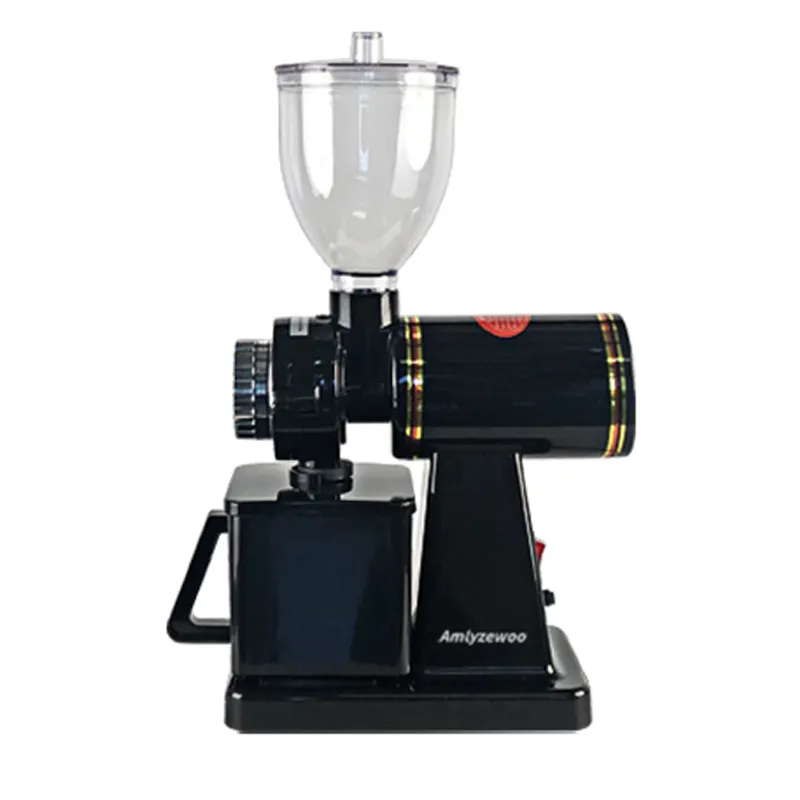There's a saying among coffee professionals: "The grinder is more important than the coffee machine." While this might sound surprising, it's fundamentally true. You can have the world's most expensive espresso machine or the most carefully sourced specialty beans, but without a proper grinder, you'll never experience coffee at its full potential. The grinder is the gateway that transforms whole beans into the perfect canvas for extraction, making it the most crucial investment in your coffee journey.
This comprehensive guide will walk you through everything you need to know to choose the perfect coffee grinder for your specific needs, budget, and brewing methods. We'll move beyond marketing hype and focus on the practical, technical, and experiential factors that truly matter in your daily coffee ritual.
Understanding Why the Grinder Matters So Much
To appreciate why the grinder is so important, we need to understand the science of coffee extraction. When hot water meets coffee grounds, it dissolves various compounds:
Sugars and carbohydrates - providing sweetness and body
Oils - creating mouthfeel and carrying deep flavors
Acids - contributing brightness and fruity notes
Caffeine and other alkaloids - adding bitterness
The goal of proper brewing is to extract these elements in perfect harmony. This is where grind consistency becomes absolutely critical.
The Problem of Inconsistent Grinding
Imagine grinding beans and getting a mixture of large chunks (boulders), medium particles, and fine dust. When hot water hits this uneven bed:
The fine dust over-extracts, releasing bitter, astringent compounds
The large boulders under-extract, leaving behind sour, acidic flavors
Only the medium particles might extract correctly
The result is a muddy, unbalanced cup where competing flavors clash, completely obscuring the coffee's true character.
The Solution: Uniform Extraction
A quality grinder creates particles of consistent size, allowing water to flow through evenly and extract all the delicious compounds at roughly the same rate. The difference is remarkable - instead of a generic bitter brew, you get a clean, balanced cup where you can actually taste the specific flavor notes the roaster worked to develop.
Blade vs. Burr: The Fundamental Choice
Your first and most important decision is understanding the difference between these two basic grinder types.
Blade Grinders: What to Avoid
Blade grinders are the most affordable and accessible option, but they're also the least effective for quality coffee. These devices use a spinning propeller-like blade to randomly chop beans into smaller pieces. The process:
Creates wildly inconsistent particle sizes
Generates heat through friction, damaging delicate aromatics
Offers no control over grind size
Typically produces more fines and boulders
Verdict: While blade grinders might work for emergency situations, they're not recommended for anyone serious about coffee quality.
Burr Grinders: The Path to Quality
Burr grinders represent the gold standard for coffee preparation. They work by crushing beans between two abrasive surfaces (burrs) at a precise distance apart. This creates uniform particles, enabling even extraction and superior flavor.
Key advantages:
Consistent particle size
Adjustable grind settings
Minimal heat generation
Better flavor extraction
Verdict: A burr grinder is essential for anyone looking to seriously improve their coffee experience.
Types of Burr Grinders: Understanding Your Options
Once you've committed to a burr grinder, you'll need to choose between several types:
Conical vs. Flat Burrs
Conical Burr Grinders
Feature cone-shaped burrs that fit inside matching outer rings
Generally more affordable
Typically slower and quieter
Less prone to heat buildup
Excellent for home use and various brewing methods
Flat Burr Grinders
Use two parallel ring-shaped burrs
Often provide slightly better consistency
Preferred by many espresso enthusiasts
Usually more expensive
Can be louder and generate more heat
Manual vs. Electric Grinders
Manual (Hand) Grinders
Offer exceptional value for money
Portable and quiet operation
Provide tactile control over grinding
Perfect for travel, pour-over, and small batches
Require physical effort
Can be slow for fine grinds or large quantities
Electric Grinders
Ultimate convenience for daily use
Consistent results with minimal effort
Better for large quantities and fine espresso grinds
Higher cost for comparable quality
Occupy counter space
Generally louder operation
Key Features to Consider When Choosing a Grinder
Grind Consistency
This is the most important factor in choosing a grinder. Look for models that produce uniform particles with minimal fines (tiny particles) and boulders (large chunks). Consistency directly correlates with flavor clarity and balance in your final cup.
Adjustability and Range
Different brewing methods require specific grind sizes:
Turkish: Powder-fine
Espresso: Very fine
Pour-over: Medium-fine to medium
French press: Coarse
A good grinder should offer precise adjustments across this entire spectrum. For espresso enthusiasts, stepless adjusters (without click stops) are particularly valuable as they allow minute changes to perfect your extraction.
Build Quality and Durability
Consider these factors:
Burr material (ceramic vs. steel)
Housing material and construction
Motor quality and power
Overall design and manufacturing quality
Premium materials might cost more initially but often provide better long-term value and performance.
Heat Management
High rotation speeds can generate heat through friction, damaging coffee's delicate flavors. Look for features like:
Slow-turning burrs
Heat-resistant materials
Efficient motor designs
Adequate cooling systems
Static and Retention Management
Static electricity can cause grounds to cling to surfaces, creating mess and waste. Some grinders incorporate anti-static technologies. Similarly, "retention" refers to how much ground coffee gets stuck inside the grinder. Low-retention designs ensure you get more of the coffee you just ground.
Ease of Cleaning and Maintenance
Regular cleaning is essential for maintaining grind quality. Consider:
How easy it is to access the burrs
Availability of cleaning tools
Manufacturer support and spare parts
Overall maintenance requirements
Matching Your Grinder to Your Brewing Method
For Espresso Enthusiasts
Espresso demands the highest precision in grinding. The fine powder and high pressure require exact particle size to achieve proper extraction times (typically 25-30 seconds). Key requirements:
Fine, precise adjustments
Excellent consistency
Low retention
Stepless adjustment capability
Recommended: Eureka Mignon Specialita, Baratza Sette 270, Niche Zero
For Pour-Over and Filter Coffee
These methods require medium-fine to medium grinds that allow for controlled flow rates while extracting fully. Important factors:
Good consistency across medium range
Minimal fines
Easy adjustment between settings
Recommended: Baratza Encore, Fellow Ode Brew Grinder, Wilfa Uniform
For French Press and Cold Brew
Coarse grinding is essential, but consistency remains important. Too many fines will slip through the mesh filter, creating sediment and bitterness. Look for:
Good coarse grind consistency
Minimal fine production
Sturdy construction
Recommended: Baratza Virtuoso+, Oxo Brew Conical Burr Grinder
For All-Round Home Use
If you regularly switch between brewing methods, you'll need a versatile grinder that can handle everything from espresso to French press. Consider:
Wide adjustment range
Good consistency across different settings
Easy to switch between grind sizes
Recommended: Baratza Forte BG, DF64, Niche Zero
Budget Considerations and Value
Entry-Level (Under $100)
At this price point, you're looking at basic electric burr grinders or quality manual options. The Baratza Encore sets the standard for electric grinders in this category, offering remarkable consistency for its price.
Mid-Range ($100-$300)
This range offers significant improvements in consistency, features, and build quality. You'll find better motors, more precise adjustment systems, and improved materials. This is the sweet spot for most home enthusiasts.
High-End ($300-$800)
Here you'll find commercial-grade performance in home-friendly packages. Expect exceptional consistency, advanced features, and durable construction that can last for decades.
Professional Grade ($800+)
While typically overkill for home use, these grinders offer the ultimate in consistency, speed, and durability. They're built for high-volume use and exacting standards.
Maintenance and Long-Term Care
Proper maintenance ensures your grinder continues to perform optimally:
Regular Cleaning
Brush out grounds after each use
Use grinder cleaning pellets monthly
Deep clean burrs every few months
Wipe down exterior regularly
Burr Replacement
Most burrs need replacement after grinding 300-500 pounds of coffee, or sooner if you regularly grind oily beans. Signs you need new burrs:
Decreased performance
Inconsistent grinding
Longer grinding times
Unusual noises
Troubleshooting Common Issues
Static: Try the Ross Droplet Technique (adding a few drops of water to beans before grinding)
Clogging: Clean more frequently, especially with oily beans
Inconsistent grinding: Check for worn burrs or misalignment
Making Your Final Decision
When choosing your perfect grinder, consider this decision matrix:
Primary brewing method - Match the grinder's strengths to your most common use
Frequency of use - Daily use demands better build quality
Budget - Invest as much as you can reasonably afford
Convenience needs - Manual vs. electric, single-dosing vs. hopper
Future-proofing - Consider your coffee journey and how your needs might evolve
Remember that a quality grinder is a long-term investment. While the initial cost might seem high, spread over years of daily use, the difference in coffee quality makes it well worth the investment.
Conclusion: Your Path to Better Coffee Starts Here
Choosing the right coffee grinder is one of the most important decisions you'll make in your coffee journey. While the initial investment might seem substantial, the daily improvement in your coffee experience makes it worthwhile. Remember that even the best coffee beans can't overcome poor grinding, while average beans can taste remarkably good when properly ground.
The perfect grinder for you is one that fits your lifestyle while consistently delivering the grind quality your preferred brewing method demands. With the right grinder, every morning becomes an opportunity to experience coffee at its best - full of nuance, complexity, and pleasure.




